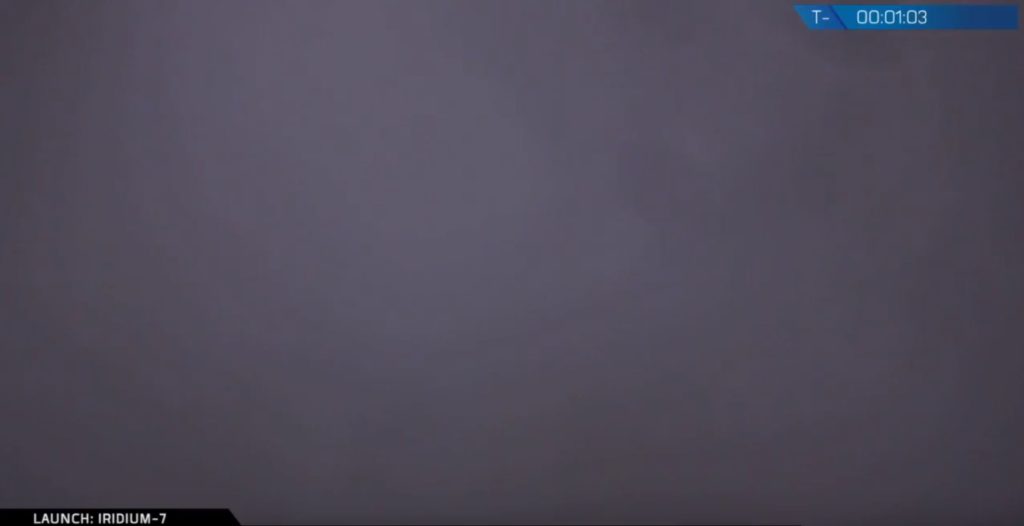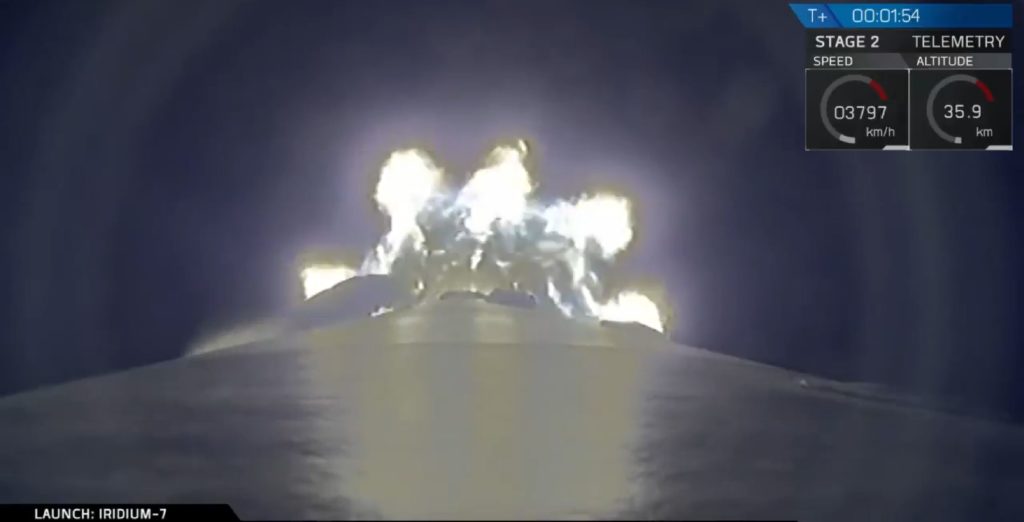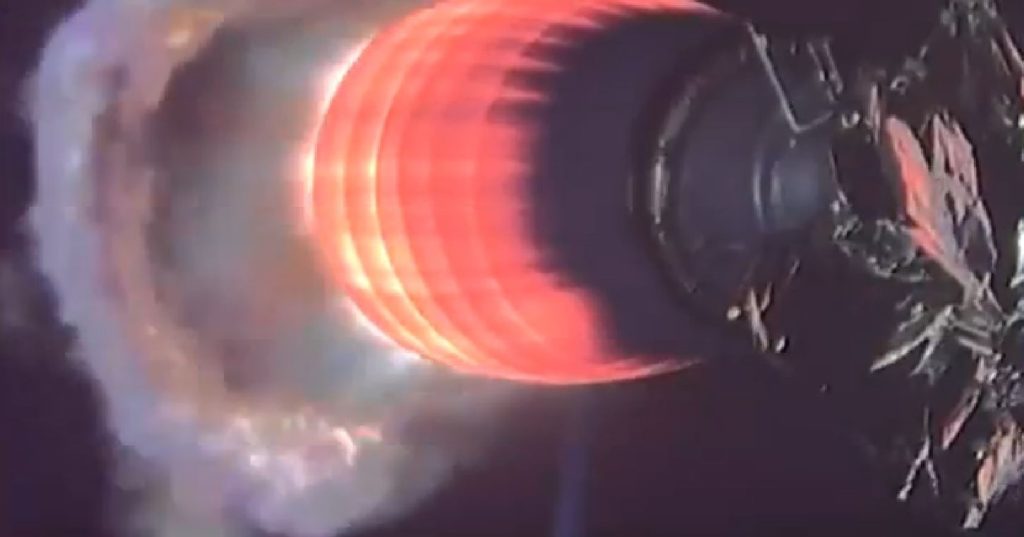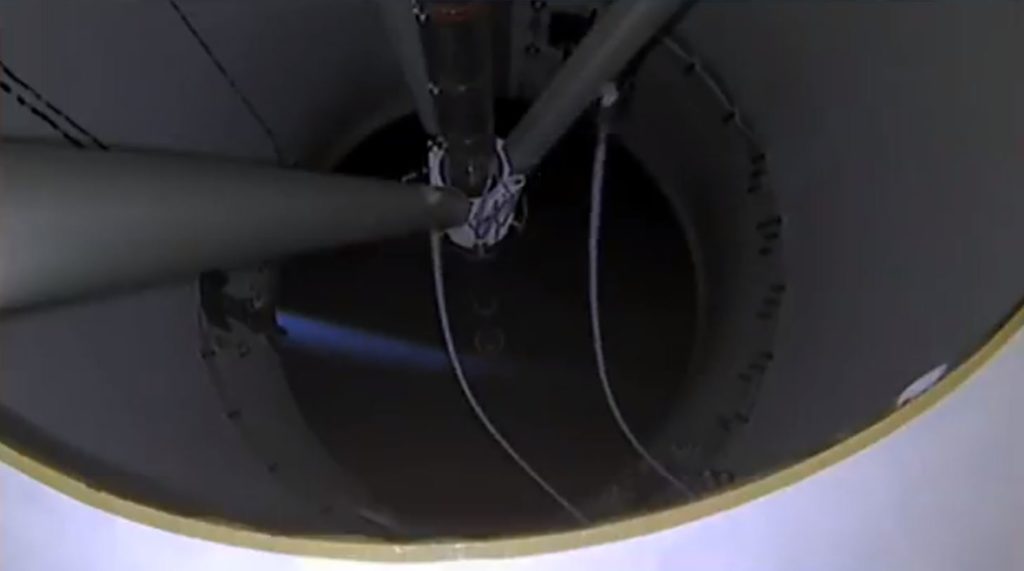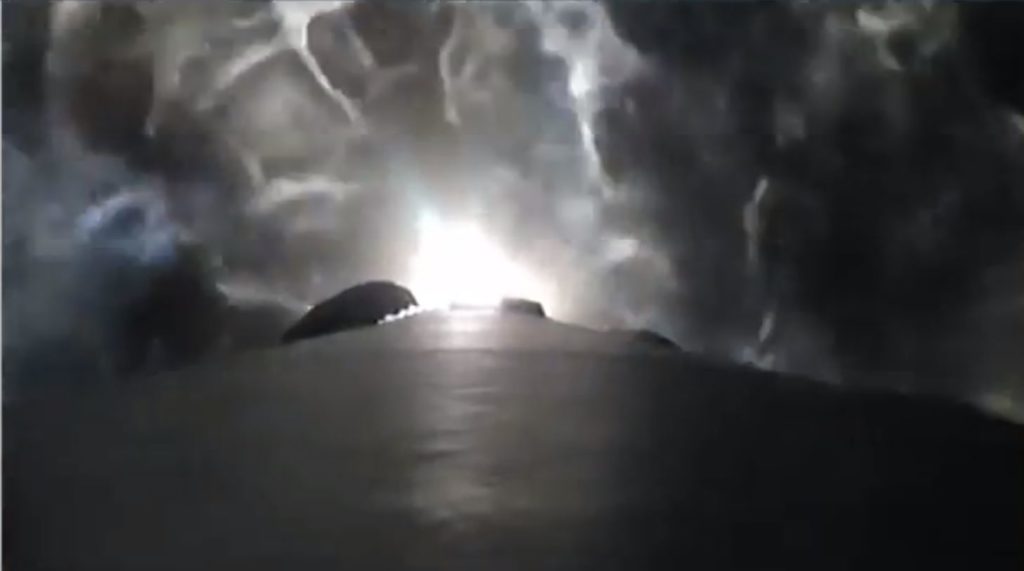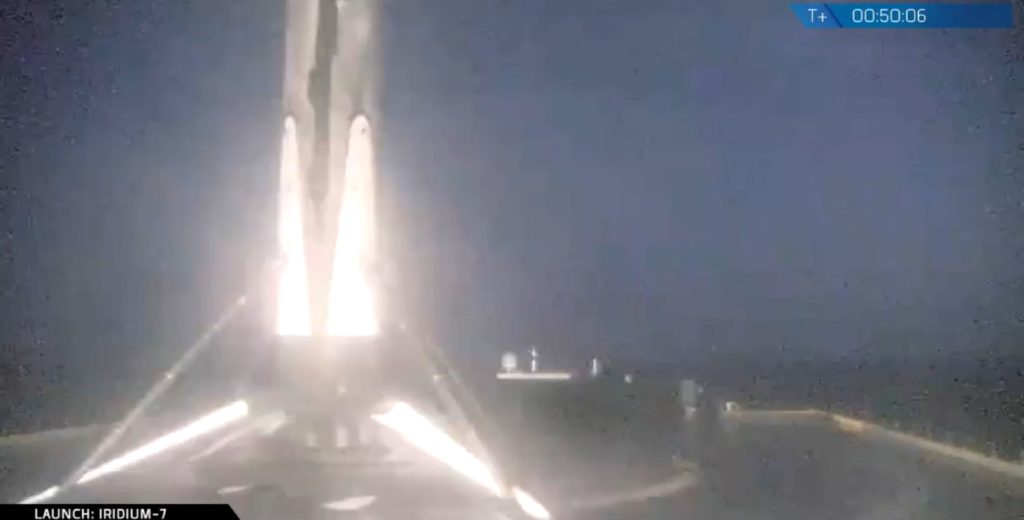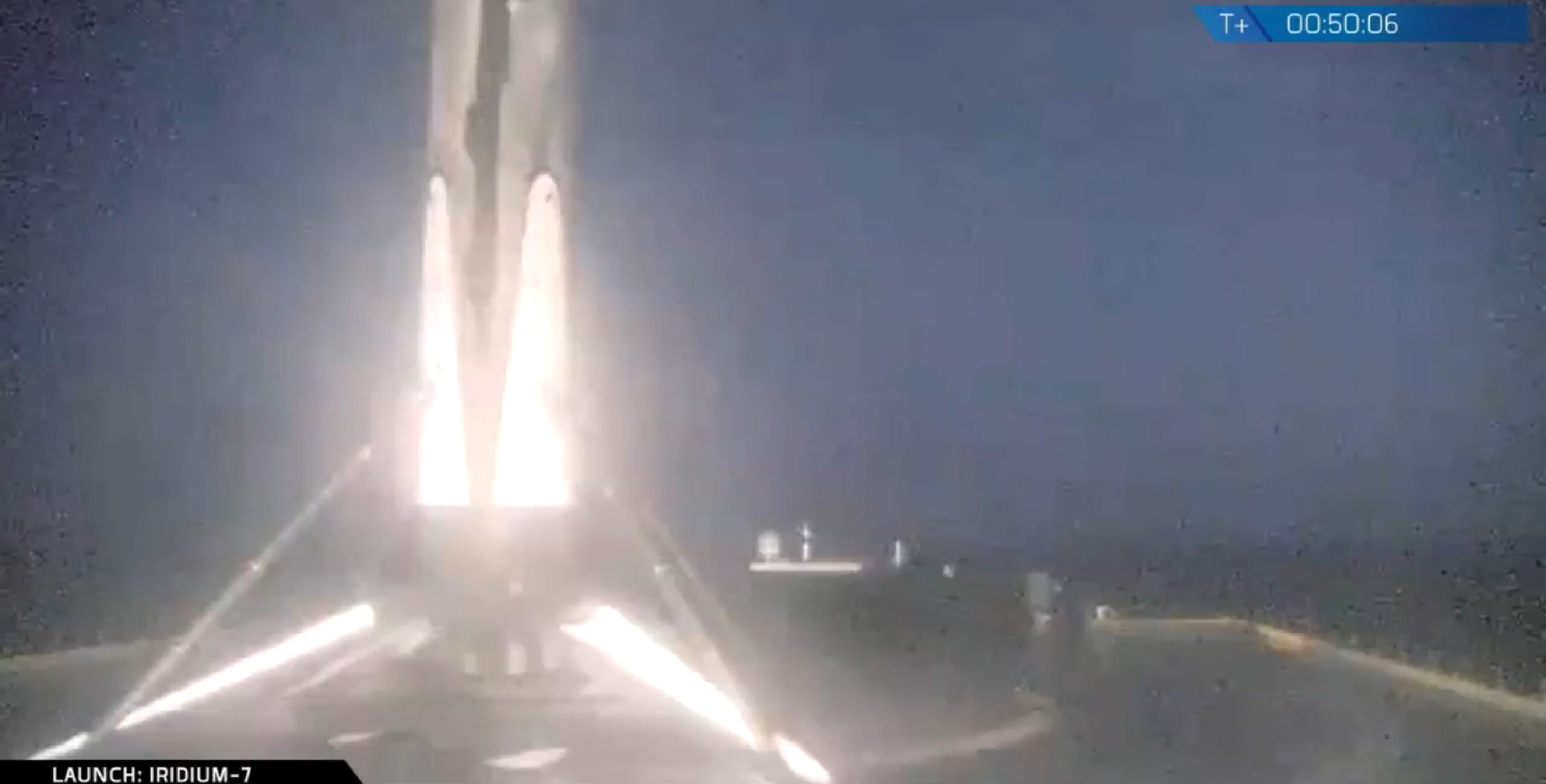
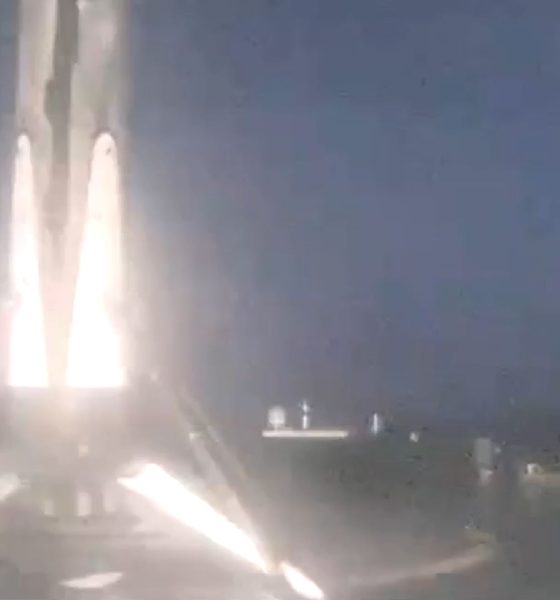
News
SpaceX nails second Falcon 9 landing in 48 hours, fairing catch foiled by weather
Just a handful of days after SpaceX’s second-ever successful launch and landing of their upgraded Falcon 9 Block 5, the company has completed the same feat on the opposite side of the United States, debuting the Block 5 rocket with a launch and booster recovery from California’s Vandenberg Air Force Base (VAFB).
The booster in question, Falcon 9 B1048, is the third Block 5 booster to roll off of SpaceX’s Hawthorne, CA assembly line and is now the first Block 5 rocket to launch from the company’s California launch facilities. On the opposite coast, SpaceX’s second Block 5 Falcon 9 booster (B1047) completed its own successful launch and landing, lofting the heaviest commercial satellite to ever reach orbit (Telstar 19V).
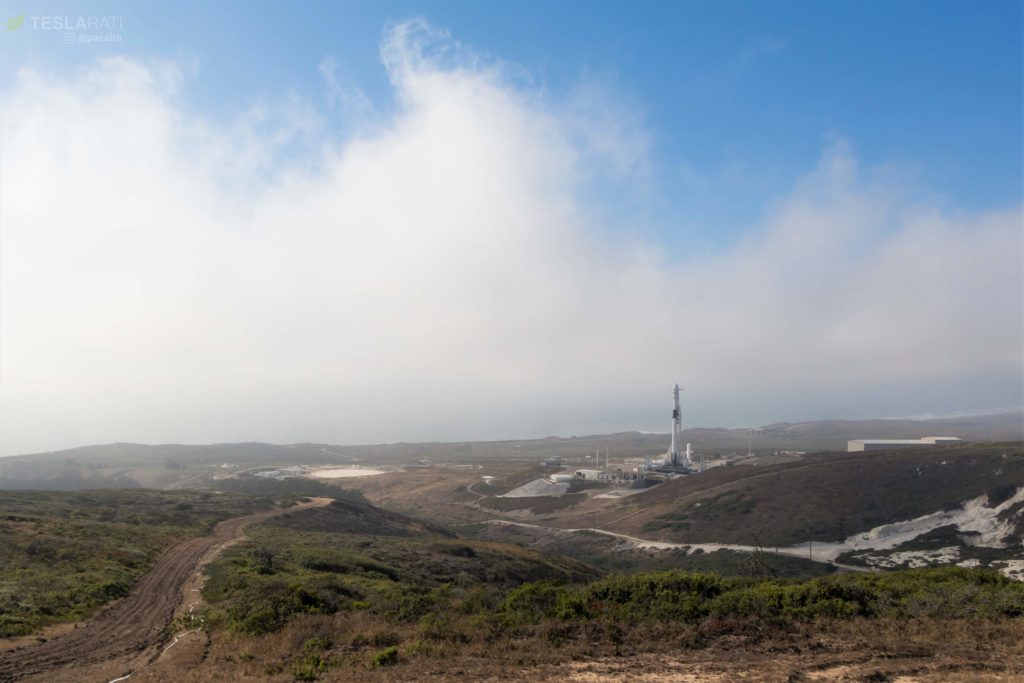
While weather during camera setup was absolutely spectacular, the predawn launch window meant that no sun was available to force the ever-present VAFB fog back over the ocean. (Pauline Acalin)
Seven months, fourteen launches
Today’s near-flawless predawn mission saw Falcon 9 place 10 Iridium NEXT satellites in a polar Earth orbit, during which the rocket’s Block 5 booster completed the first landing on Just Read The Instructions in nearly ten months and Mr Steven made his first attempt at catching a parasailing Falcon fairing with his massive net and arms upgrades. Those upgrades, tracked tirelessly by Teslarati photographer Pauline Acalin for the better part of July, took barely a month to go from a clean slate (old arms and net fully uninstalled) to operational, fairing-catching status, an ode to the incredible pace at which SpaceX moves.
Sadly, the vessel’s Iridium-7 fairing catch attempt was sullied from the start by inclement weather – primarily wind shear – that significantly hampered the accuracy of each fairing halve’s parafoil guidance, meaning that Mr Steven’s crew did see the parasailing halves touch down, but too far away to catch them in Mr Steven’s large net. Falcon 9 B1048 had its own difficulties thanks to what engineer and webcast host John Insprucker described as “the worst weather [SpaceX] has ever had” for a Falcon booster landing. Nevertheless, Falcon 9 appeared to stick an off-center but plenty accurate landing aboard drone ship JRTI, although SpaceX technicians are likely going to wish they had the same robotic stage securer located aboard OCISLY on the opposite coast.
- Just a hint of fog at liftoff. (SpaceX)
- Onboard cameras thankfully came in clutch, providing an absolutely extraordinary view of most phases of launch. (SpaceX)
- After MECO and S2 ignition, there were some ethereal plume interaction effects caught on Falcon 9’s onboard cameras. (SpaceX)
- Also Earth’s limb from inside B1048’s interstage. (SpaceX)
- And more unbelievable plume interaction… (SpaceX)
Just Read The Instructions, on the other hand, was similarly tracked but primarily to verify that nothing was happening – the vessel’s last operational trip to the Pacific Ocean dates back to the first half of October 2017. Since then, SpaceX began a process of intentionally expending Falcon 9 boosters that had already flown once before, choosing to essentially start from scratch with a fresh fleet of highly reliable and reusable Falcon 9 Block 5 boosters rather than recover older versions of the rocket and attempt to refurbish them beyond the scope of their designed lifespans.
The Block 5 design, however, has taken the countless lessons-learned from flying and reflying previous versions of Falcon 9 and rolled them all into one (relatively) final iteration of the ever-changing rocket. With any luck and at least a little more iteration, Falcon 9 Block 5 boosters should be capable of launching anywhere from 10 to 100 times, 10 times with minimal or no refurbishment and 100 times with more regular maintenance, much like high-performance jet aircraft do today.
Looks good, but so many details need to be right. Journey back from hypersonic becomes extremely difficult as velocity increases. Altitude is easy, velocity is hard.
— Elon Musk (@elonmusk) July 23, 2018
With three successful launches of new Block 5 boosters now under the new version’s belt, it’s safe to say that the rocket is off to an extremely good start. The most important milestones to watch for over the next several weeks and months will be the first reflight of a recovered Block 5 rocket, the first reuse of a Falcon 9 payload fairing, and then the first third/fourth/fifth/etc. reuse of Block 5 booster. On the horizon, of course, is SpaceX CEO Elon Musk’s challenge to launch a Falcon 9 Block 5 booster two times in less than 24 hours, and do so before the end of 2019.
2018: I’m watching a livestream of a rocket sending satellites to orbit and then landing on a droneship in the ocean — while watching the company’s other droneship return to port with a rocket that did the same thing on the opposite side of the country three days ago. pic.twitter.com/wWA8ZCBAeY
— John Kraus (@johnkrausphotos) July 25, 2018
Roughly 3,000 miles to the East, SpaceX’s just-recovered Florida Block 5 booster wrapped up a picture-perfect arrival in Port Canaveral aboard drone ship Of Course I Still Love You at the exact same time as another Block 5 rocket was launching (and landing) on the opposite coast.
For prompt updates, on-the-ground perspectives, and unique glimpses of SpaceX’s rocket recovery fleet (including fairing catcher Mr Steven), check out our brand new LaunchPad and LandingZone newsletters!

Elon Musk
Elon Musk just said some crazy stuff about the Tesla Roadster

Elon Musk appeared on the Moonshots podcast with Peter Diamandis today to discuss AGI, U.S. vs. China, Tesla, and some other interesting topics, but there was some discussion about the upcoming unveiling of the Roadster, the company’s electric supercar that will arrive several years after it was initially slated for release.
Musk made some pretty amazing claims about the Roadster; we already know it is supposed to be lightning-fast and could even hover, if Tesla gets everything to happen the way it wants to. However, the car has some pretty crazy capabilities, some of which have not even been revealed.
On the podcast, Musk said:
“This is not a…safety is not the main goal. If you buy a Ferrari, safety is not the number one goal. I say, if safety is your number one goal, do not buy the Roadster…We’ll aspire not to kill anyone in this car. It’ll be the best of the last of the human-driven cars. The best of the last.”
🚨 Elon on the Roadster unveiling, scheduled for April 1:
— TESLARATI (@Teslarati) January 6, 2026
Musk makes a good point: people who buy expensive sports cars with ridiculous top speeds and acceleration rates do not buy them to be safe. They hope they are safe in case of an emergency or crash, but safety is not at the forefront of their thoughts, because nobody buys a car thinking they’ll crash it.
The Roadster is truly going to push the limits and capabilities of passenger vehicles; there’s no doubt about that. Tesla plans to show off the new version car for the first time on April 1, and Musk has only hinted at what is possible with it.
Musk said back in November:
“Whether it’s good or bad, it will be unforgettable. My friend Peter Thiel once reflected that the future was supposed to have flying cars, but we don’t have flying cars. I think if Peter wants a flying car, he should be able to buy one…I think it has a shot at being the most memorable product unveiling ever. [It will be unveiled] hopefully before the end of the year. You know, we need to make sure that it works. This is some crazy technology in this car. Let’s just put it this way: if you took all the James Bond cars and combined them, it’s crazier than that.”
Production is set to begin between 12 and 18 months after the unveiling, which would put the car out sometime in 2027. Hopefully, Tesla is able to stay on track with the scheduling of the Roadster; many people have been waiting a long time for it.
News
Tesla launches hiring for Robotaxi program in its twentieth country
Overall, the hiring signals Tesla’s aggressive timeline for global dominance in autonomous mobility.

Tesla has launched a hiring initiative for its Robotaxi program in its twentieth country, as the company posted two new jobs in Thailand this week.
Tesla is hiring in Bangkok and Kowloon for the Vehicle Operator position, which is related to data collection, and is the first in Thailand, but the twentieth country overall, as the company tries to expand into other markets.
🚨 BREAKING: Tesla is hiring additional full-time Vehicle Operators in Bangkok, Thailand.
Previous openings were 6-month, part-time roles. These are equivalent to AI Safety Operator roles in the U.S. pic.twitter.com/R6LzoU1bos— Tesla Yoda (@teslayoda) January 5, 2026
Tesla has had active job postings for Vehicle Operator positions in the United States, India, Israel, Taiwan, Germany, the Czech Republic, Hungary, the UK, Finland, Switzerland, Sweden, the Netherlands, Austria, Spain, Norway, Italy, and Turkey in past listings.
These postings are not all currently available, likely because the roles have been filled.
Thailand is the most recent, and broadens the company’s potential path to expanding its ride-hailing program, which is only active in the United States in Austin, Texas, and the California Bay Area, so far.
These roles typically involve data collection, which assists in improving Autopilot and Full Self-Driving operation. Tesla’s self-driving programs utilize real-world data that is accumulated and stored, observing vehicle and traffic behavior, as well as tendencies that are performed by human drivers to help increase safety and overall performance.
Overall, the hiring signals Tesla’s aggressive timeline for global dominance in autonomous mobility. Although the company has several high-profile rivals and competitors in the field, it has established itself as a main player and a leader in the development of autonomous technology, especially in the U.S., as its FSD suite is refined on almost a weekly basis.
The Full Self-Driving suite is available in seven countries and territories currently, including the U.S., Canada, China, Mexico, Puerto Rico, Australia, and New Zealand. Its biggest goal for expansion is currently the European market, where regulatory hurdles have been the main bottleneck prolonging its launch on the continent.
Tesla has performed months of testing in various European countries, including France and Spain, and does have support in some areas from various regulatory agencies. However, the company is hoping to get through this red tape and offer its suite in Europe for the first time, hopefully this year.
News
Tesla China rolls out Model Y upgrades, launches low-interest financing
These strategies are aimed at improving the ownership experience and keeping vehicle pricing competitive in the world’s largest electric vehicle market.

Tesla has rolled out minor updates to the five-seat Model Y in China, upgrading the vehicle’s center display to a higher-resolution 16-inch 2K screen. The electric vehicle maker also introduced attractive financing options, including 7-year low-interest rates, to offset the new purchase tax on EVs.
These strategies are aimed at improving the ownership experience and keeping vehicle pricing competitive in the world’s largest electric vehicle market.
Five-seat Model Y gets larger, better display
With its recent update, all three variants of the five-seat Model Y now feature an upgraded 16-inch 2K resolution center display, which replaces the vehicle’s previous 15.4-inch 1080p panel. This screen was already used in the six-seat Model Y L, and it offered improved visual clarity. Tesla China has also updated the Model Y’s headliner to black, giving the vehicle a sleeker appearance.
Prices of the five-seat Model Y remain unchanged at RMB 263,500, RMB 288,500, and RMB 313,500 for the respective trims. This update enhances the cabin experience as domestic rivals are already adopting high-resolution screens. As noted in a CNEV Post report, some domestic automakers have begun rolling out vehicles equipped with 3K-resolution displays.
New financing offers
Tesla also launched ultra-long-term financing offers for its locally produced models in China, which include the Model 3 sedan, the five-seat Model Y, and the six-seat Model Y L, through January 31, 2026. The 7-year option features an annualized fee rate as low as 0.5%, which is equivalent to 0.98% interest. This is expected to save customers up to RMB 33,479 ($4,790) compared to standard rates.
A 5-year zero-interest plan is also available, and it has been extended to the Tesla Model Y L for the first time. These incentives help offset China’s new 5% purchase tax on New Energy Vehicles (NEVs) in 2026-2027. Some of Tesla’s rivals in China have announced in recent months that they would be covering the purchase tax owed by buyers early this year.
